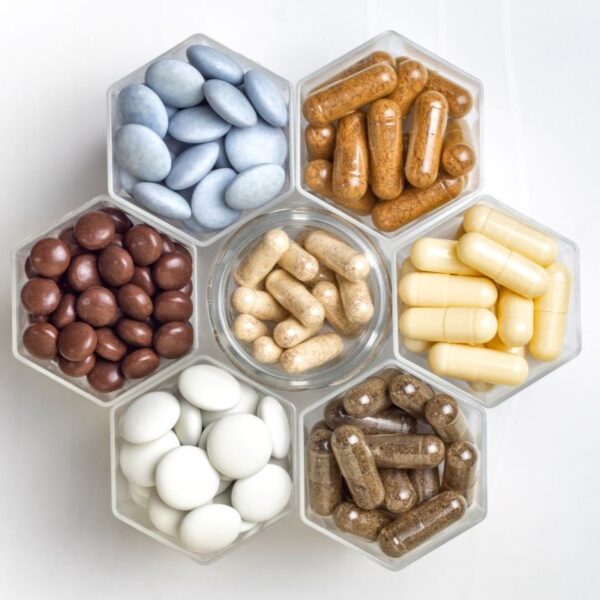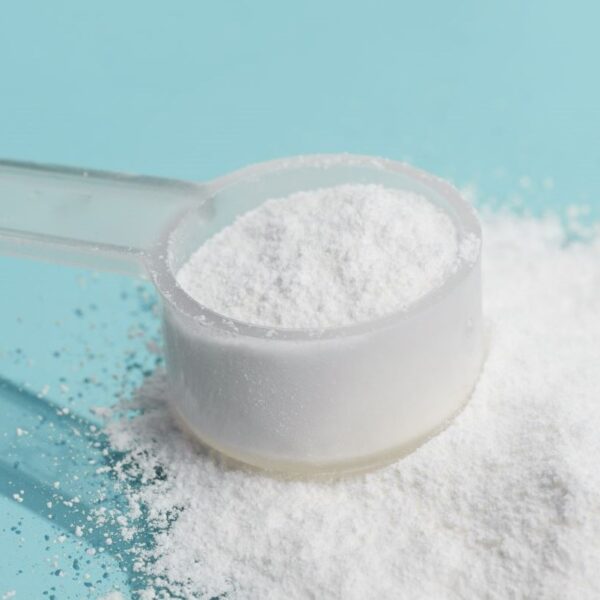What is Limonene?
Limonene is a versatile citrus flavor and fragrance-enhancing terpene used in many foods and dietary supplements.
Limonene is a naturally occurring cyclic monoterpene (C10H16) found in the essential oils of citrus peels from fruits such as oranges, lemons, limes, and grapefruits. Its flavor-enhancing qualities make it a great addition to food products.

Essential oils containing limonene can be extracted by steam distillation or cold pressing the rinds of citrus peels. Limonene can also be synthesized from turpentine or pinene, typically derived from pine trees. The synthetic production process involves the catalytic hydrogenation of these compounds.
Applications in Food & Nutraceuticals
Limonene as a Flavor or Flavor-Masking Agent in Food
Limonene is an essential component of citrus oil. It has a robust natural citrus aroma — making it a pleasant flavoring agent in many food products because of its fruity flavor when added to food and beverages.
It also masks unpleasant tastes in food products. Flavor-masking mixes two odors, decreasing the olfactory perception of one or both components. Adding limonene to a product helps cover unpleasant tastes and create a more pleasant overall flavor.
Product Examples
As a flavoring agent, limonene touches many categories in the food and beverage industry. Here are some everyday products that often include limonene:
| Type | Examples |
|---|---|
| Baked Goods | Cake, Cookies, Icing & Cream |
| Confections | Ice Cream, Jams & Jellies, Candies, Chocolates |
| Beverages | Fruit Juices, Aerated beverages, Flavored drinks |
| Convenience Foods | Instant beverages, RTE sauces and gravies, RTC Foods |
| Alcoholic Drinks | Cocktails, Beer |
Limonene as Dietary Supplement
As a dietary supplement, limonene touts potential health benefits, including:
- Anti-inflammatory properties
- Antioxidant
- Lowering cholesterol levels & obesity
- Anti-anxiety effects (anti-depressant), reduce stress and improve mood
- Improved digestion, and ability to relieve indigestion, heartburn
- Respiratory benefits
Dosage Form Factors
Many commercial nutraceutical products contain limonene. Typical forms include suspensions, gels & gummies, and soft capsules. Limonene is also used in aromatic oils marketed for calming, stress-reducing, and therapeutic purposes.
Properties of Limonene
| Color | Colorless |
| Physical Form | Liquid (at room temperature) |
| Melting Point | -73 °C |
| Boiling Point | 177 °C |
| Density (20°C) | 0.842 g/ml |
| Vapor Pressure | 1.55 mm Hg at 25 °C |
| Flash Point | 48 °C |
| Refractive Index | n20/D 1.473 |
| Solubility | – Miscible with oil and organic solvents – Insoluble in water |
| Shelf Life | 18-24 months |
| LD50 | 4750 mg/kg (Rat) |
| Storage Conditions | Below 30 °C |
| Origin | Plant/Synthetic |
| Labeling Claims (*Product variant) | Vegan, Non-GMO, Naturally derived*, Halal*, Kosher*, Plant-based*, Organic*, Cold Pressed* |
How is Limonene Metabolized in Humans?
CYP2C9 and CYP2C19 break down limonene into smaller compounds, which are then eliminated from the body through urine or feces. Cells can also use metabolites of limonene for energy production and other metabolic processes. Here are some considerations regarding the potential health effects of limonene metabolites:
- Limonene-1,2-diol is an antioxidant shown to reduce inflammation and protect cells from damage.
- Perillyl alcohol is believed to have anti-cancer properties and may help lower cholesterol levels.
- Carveol has anti-anxiety effects and can help to improve mood.
Typical Formulations
Cake
In cake, limonene provides a citrusy flavor.
Here is an example of a cake formulation table with limonene along with the % weight of ingredients:
| Ingredient | % Composition (wheat flour basis) |
|---|---|
| Wheat Flour | 100 |
| Sucrose | 60 |
| Butter | 50 |
| Egg | 35 |
| Skim Milk Powder | 7 |
| Baking Powder | 4 |
| Vanilla | 1 |
| Water | 35 |
| Limonene (Lemon Oil) | 0.5 |
Ice Cream
In ice cream, limonene provides a citrusy flavor.
Here is an example of an ice cream formulation table with limonene along with the % weight of ingredients:
| Ingredient | Composition |
|---|---|
| Milk | 7 l |
| Milk Powder | 650 g |
| Salep | 30 g |
| Emulsifier (Monoglycerides and Diglycerides) | 20 g |
| Gelatine | 8 g |
| Sugar | 1500 g |
| Limonene | 0.1 -0.5 % |
Limonene Formulation Considerations
Stability
| Parameter | Stability |
|---|---|
| Phase Stability | – Insoluble in water – Emulsifying agent is required to form stable emulsions in water-based systems – Freely soluble in oil & alcohol and hence no issue of phase separation in oil & alcohol-based systems |
| Heat Stability | – Heat-stable monoterpene and can be distilled without decomposition – At elevated temperatures, it cracks to form isoprene – Oxidizes quickly in moist air to produce carveol, carvone, and limonene oxide – Results in a less intense citrusy flavor and aroma |
| Oxidative Stability | – Limonene is relatively oxidation stable and does not easily break down when exposed to oxygen – For use in fragrances and flavorings, as the compound will remain intact over time |
| Light Stability | Light stable |
| pH | Stable at pH >3.0 in water-based systems |
Volatility & Flammability
- Limonene is volatile and thus can quickly evaporate at room temperature.
- Its volatility limits its use as a flavoring agent in food products processed and stored in ambient temperatures.
- Shelf stability of products with limonene can be improved with appropriate packaging/storage conditions.
- Flash point of 48°C makes it susceptible to fire hazards if used in higher concentrations
Extraction vs. Synthetic Production of Limonene
Limonene is extracted from citrus fruits (such as lemons, limes, and oranges) by steam distillation or cold pressing the rinds. It can be synthesized as well. The table below highlights the upsides and downsides of limonene obtained from these sources.
| Steam Distillation | Cold Pressing | Synthetic |
|---|---|---|
| – A purer form of the compound with fewer impurities – Steam distillation preserves the delicate & minor compounds in citrus oils – A more efficient and cost-effective method for extraction | – Natural form of the compound – Not exposed to heat and no loss of highly volatile components – Distinctive citrusy aroma preserved | – A cost-effective option compared to the extraction of limonene – Lower impurities and higher concentration of the desired terpene |
Interaction with Other Ingredients
Limonene possesses vigorous antioxidant activity, which makes it incompatible with potent oxidizing agents. On the contrary, limonene helps prevent the oxidation of other food ingredients leading to color and taste stability.
Dosage
Limonene is a powerful flavoring agent and must be used in minimal quantities (<0.5%) in food except when a higher dosage is intended (i.e., nutraceuticals). Too much limonene can overpower other flavors.
Sensory Attributes
| Parameter | Value |
|---|---|
| Aroma | Citrusy, sweet, and fruity, with a slight hint of lemon |
| Taste | Harsh, bitter like |
| Color | Colorless |
Limonene Safety & Regulatory Considerations
The Food and Drug Administration (FDA) lists limonene as Generally Recognized as Safe (GRAS) as a food additive. The European Food Safety Authority (EFSA), the Japan Food Safety Commission (JFSC), European Commission (EC) also approve its usage in food.
Maximum usage levels of limonene for different food categories collected as per the recent consideration under the Use of Flavoring Ingredients and Food Additives Amendment Project by FEMA are as follows.
Legal Maximum Dosage by Category
| Food Product | Dosage (Maximum mg/kg) |
|---|---|
| Soft Drink | 31 |
| Cold Drink | 68 |
| Candy | 49 |
| Baked Food | 120 |
| Pudding | 48-400 |
| Gum Candy | 2300 |
Identification Numbers
| CAS Number | 138-86-3 |
| EC Number | 642-944-1 |
| FEMA Number | 2633 |
| JECFA Number | 1326 |
Fun Facts About Limonene
- As in insect repellent before its use for food flavoring, limonene was used as a natural pesticide.
- Limonene is found in nature and produced by various plants, not just citrus fruits. It can be found in trees, herbs, and spices and is even present in some strains of cannabis.
- Limonene is also combustible and has been considered as a potential biofuel.
- The chemical structure of limonene is unique in that it can exist in two different forms called enantiomers d-limonene & l-limonene.
Additional Sources & Resources
- Science Direct: Recent Advances in Natural Products – Limonene (2020)
- Sydney Solvents
- Springer: Oxidation of limonene over molybdenum dioxide-containing nanoporous carbon catalysts as a simple effective method for the utilization of waste orange peels (2018)
- NIH: Metabolism of (+)- and (-)-limonenes to respective carveols and perillyl alcohols by CYP2C9 and CYP2C19 in human liver microsomes (2002)






